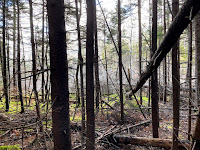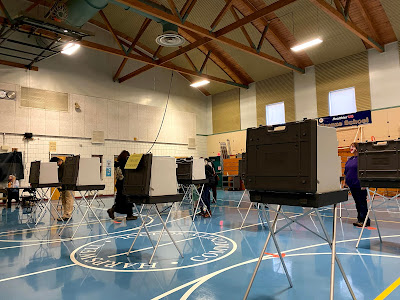Stories.
Back when I started this blog, I was working on that: how is a story, what might it mean, exploring ideas and self and the world to make stories. Stories drawn from imagination, not news commentary, not essays…
In late 2016, after I’d earlier seen the run-up to the Brexit contest while in Europe, I was shocked to hear echoes of that banshee howl in our presidential election. It hijacked any playful or ruminative ideas about fiction. Since then, this space has largely published essays relating to politics. There should have been more, but I write slowly and chew on the words and then the paragraphs, and by the time the mastication is done, why! Something even more appalling has happened!
As the 2020 election results were rolled out, in an election scrutinized as no election has ever been, I was encouraged. But I wasn’t sanguine about what the president might do, or what he might encourage his supporters to do. Indeed, in late November, on a phone conversation with family members, amidst the chit chat came the portentously dropped (really! the voice lowered as the words were spoken) warning that “the election isn’t over” which, in my cowardice, I shut down rather than confront. Because I’d long since learned that reason, evidence and even personal experience (I often serve as a poll worker in my town) wouldn’t counteract the influence of party—and Fox News—on some of my family.
 |
| Voting in a pandemic, Harpswell ME |
Looking back, futile as it might have been, I regret not speaking directly.
What happened on 6 January in the capital should shock anyone in thrall to the false promises of the sitting president back into the real world. Those who applaud the coup attempt that occurred that day should be politely shunned henceforth by anyone who values a functioning democracy under the Constitution.
Vignettes:
A woman weeps outside the capital. “The police maced me!” she whines. A reporter asks, “What happened?” “We stormed the capital! It’s a revolution!” She says.
(I wonder what she thought happens when you “storm” a federal building. Were the security forces supposed to stand down? Which raises a question being asked by those responsible for such questions.)
A guy in the rotunda says, “This is our house, these people work for us.”
(So… the point of trashing the capital and trying to disrupt the work was…?)
A woman not yet at the capital says, “[Trump] won the election. They’re trying to steal it.”
(The president’s supporters claim the evidence for this is everywhere. Which begs the question of why not a single court has found it in the filings made by the president’s lawyers, regardless of who appointed the judges hearing the claims.)
Perhaps most revealing, another woman complains “They were supposed to gas Black Lives Matter people. But why would they gas us?”
(And if these folks had been a BLM group, there would have been law enforcement to spare, and they would, indeed, have been pepper sprayed, manhandled, and possibly shot, judging by demonstrations elsewhere over the past year. A point not lost on anyone in the aftermath.)
Perhaps most troubling, though is a man who points at the interviewer and shouts: “You did this! We were just normal people living our lives!”
By and large, he was right. The people whose words I’ve recorded more or less as I heard them weren’t the folks in costume, or wearing “Camp Auschwitz” tees or even MAGA caps. They were people who in other circumstances you wouldn’t glance at twice… normal people.
The president didn’t glance at them either, but he made them feel as if he was looking straight in their eyes and seeing them. He said things they thought but didn’t dare say, because on one level they knew it wasn’t right, even though they felt it: racism, anti-semitism, islamaphobia, misogyny. In doing so, he made them feel heard. So when he called they came, because they WANT to believe the election was stolen from him and that they can steal it back somehow, as if it’s a magic bundle he can use to make everything the way it used to be (and really never was).
I understand all that, but I’m tired of catering to it.
President elect Biden is right: this isn’t who we are. And before you say, Oh, but it is! let me point out that while the photographs of the storming of the capital are horrifying, the rally that preceded it, while big, wasn’t enormous. It didn’t match Obama’s inaugurations. It didn’t match the resistance march in DC and elsewhere following Trump’s inauguration. It didn’t meet the national outpouring of marches, in the midst of a pandemic, that have followed George Floyd’s murder.
The people wearing MAGA caps and “Camp Auschwitz” hoodies who scrabbled up the capital walls like cockroaches and swarmed the capital halls are NOT a majority. The 2020 election proved that; marches through the 4 years of the Trump nightmare proved that; and the ultimate failure of the attack on the capital proved that. The GA senatorial races just the day before the insurrection proved that, races that gave Senate control to opponents of the present administration.
The president made a great deal of noise during his campaigns and tenure about “law and order,” and tried to conflate that slogan with the principle of the rule of law. But his entire presidency has demonstrated that he has no respect for the rule of law, without which “law and order” has no meaning.
There were probably people in that crowd who genuinely believed their guy won the election and it was being stolen from him. With apologies to my family members who are in that camp, such persons are intellectually lazy (at best) and profoundly mistaken, as attested by count after count and court after court.
But there were others in the crowd who didn’t care who actually won; for them, what was important is that their guy stayed in power because, as the gassed woman implied, their guy would see to it that Black Lives Matter folks were the ones to get pepper sprayed (at best).
We aren’t yet out of the woods.What comes next is a period of profound uncertainty, not of purpose and commitment—President-Elect Biden and VP Harris are fully versed in the law and their obligations—but of how the people of the United States will respond to the challenge raised by a violent group of radicalized right-wingers and their misguided (if not simply cynically self-serving, or just as bad, cowardly) representatives in Congress.
Georgia offers a glimmer of hope, as its distinctly Republican office holders respected the presidential results under extreme pressure, and conducted successful run-off Senate elections, where both GOP Senate candidates conceded their defeats. Georgia! Who would have imagined?
It is now incumbent on every one of us who believes in the rule of law and the mandates of our Constitution to stand firm against the efforts of those who would deny our free and fair electoral process. Their motives are irrelevant; law and order require adherence to the Rule of Law, to actions having consequences.
At the same time, we need to be ready to work with those we disagree with to find avenues for moving forward together. We need to calm the fearful and hear the alienated—with one caveat: Trumpism must be disavowed. The corrupt, putrid carcass of the last four years must be reduced to an object example of what CANNOT be tolerated in the United States of America.














